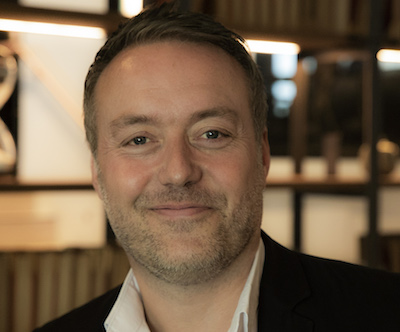Nigel Ruffell: How You Get To Make Magic

By Nigel Ruffell (above), founder and director, The Company We Keep
Fear of the unknown is lethal to brave, inventive ideas. It makes clients conservative. And yet, the creative industries – advertising agencies, events and brand experience agencies, production companies, design studios – depend on brave, inventive ideas to survive.
There is an antidote to fear of the unknown. It’s less well known than the no-holds-barred, no cost spared presentation, the “dilute the idea a bit and re-present” solution or even the expensive client lunch gambit.
It’s experiencing the future. Yes, this sounds like an impossibly tall order. But it is possible. At The Company We Keep, we’ve achieved it. We achieved it using a tool that is just part of how we do things; what we call cross pollination. You might call it drawing on a wide range of people and their ideas, and applying tools and thinking from other industries in new ways.
It’s readily available, not very difficult to put into action and effective. It is, though, under-used.
As creative industries, we pay lip service to diversity. Increasingly, we’re all hiring outside our boundaries. But there are so many more minds full of ideas out there. We can’t hire them all. They work in different industries. We can, though, use them. And technologies? Let’s draw a parallel with medical marijuana. One day, someone realised that the recreational drug plant might be useful as a therapeutic pharmaceutical. A new way of solving pain, the muscle spasms in MS, nausea during chemotherapy, and Crohn’s disease was born. There are technologies in other, as well as our own, industries that our creative ingenuity can turn into the most valuable allies.
In April this year, Russian agency, Vokshod, used A.I. in a spectacularly creative way to highlight the importance of a free media for independent Russian news channel, TV Rain. It raised a pair of twin A.I.s from birth, feeding them only news – one received news from the state-owned news channel Russia-1, the other news from TV Rain. In six months, the twins were able to answer any questions. Here’s an example of their answers to the question, “What are Russia’s main evils?” Russia-1’s answer was “opposition, pensioners and public service employees”. TV Rain’s was ‘international isolation, the stigma of a terrorist state and corruption”.
The Limbic Chair lets your legs navigate the VR world while sitting at a desk. Your eyes and hands are free, just like they are in real life. It also makes CAD, image editing and MRIs more natural. But when its creators got together with RehaClinic, they found a new use for the Limbic Chair. It gave people in rehabilitation after injuries and because of disease a virtual experience of using their bodies, to help them use their arms and legs properly again. The effects were both physical and emotional, helping them to heal.
VR and A.l. have been used in traditional ways in events. But there’s so much more that they can do. The Salesforce World Tour was a huge event for us. A showcase of what we can do for clients. We wanted it to be perfect. We had an idea that spatial immersive virtual reality technology could help by enabling a VR walkthrough to scale of the upcoming event. It did. It gave everyone involved access to richer creative problem solving and the luxury of more time to troubleshoot. The technology has been around for some time but never used in this capacity. It should, and I believe it will become the norm for major events and brand activations.
Using VR technology in the event space, brands can foresee the future. They experience their event virtually as it will be on the day. They experience what works and what doesn’t, and how signage, screens, decorations, and props look and feel to an audience. It works so well we’ve actually begun to take it further, developing experiences in which speakers can present using A.I. technology from the stage to an audience, with their content live on screens and on fold-back monitors before the event. This means they get used to the space and experience their presentation before they deliver it on the day.
These adaptations of VR and A.I. technology make bold ideas and brave creative elements comfortable for clients. There’s no, “what if it doesn’t work?”. There are no eleventh-hour modifications that cost time and money and add to everyone’s stress loads. When you draw on theatre and performance to entertain and immerse an audience, the key is still the story. The magic is telling that story in a captivating, surprising – brave and inventive – new way. Conquering fear of the unknown is how you get to make magic.
